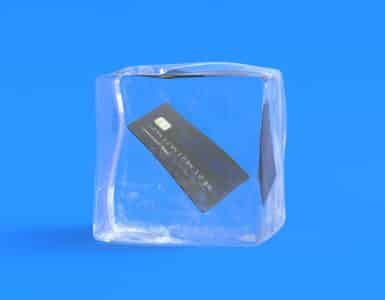Do one thing: If you have a credit card you haven’t used in six months or more, use it to make a small purchase to keep it from being labeled inactive. Then, pay the balance off before the end of the grace period.
If you have more than a few credit cards tucked inside your wallet, or even hidden in a dresser drawer, you may not use all of them regularly. It happens. You sign up for a new card for a specific purpose and stop using it.
What’s Credit Card Dormancy?
Unfortunately, not using a credit card for a while may place it into what’s known as a dormant status, which could result in the credit card issuer closing the card. Credit card dormancy can also happen when you apply for and receive a new line of credit, increase your total available credit, and never use the account.
Account Closure Varies
While there are no hard and fast rules about how long a card can be open and not used before a company moves to close the dormant credit line, it can sometimes take as little as six months or as long as two or three years. It ultimately depends on the issuer, the customer, and other factors many issuers don’t openly discuss.
No Notice is Required
According to the Consumer Financial Protection Bureau, credit card companies don’t have to notify you if they plan to close your account. Fortunately, credit card issuers can no longer charge customers inactivity fees, something that was banned by the Federal Reserve Board in 2010 as part of the Credit Card Accountability Responsibility and Disclosure Act of 2009.
How Closing a Dormant Card Can Impact Your Credit Score
Having a dormant credit card isn’t necessarily a bad thing unless your card issuer decides to close the card. If that happens, it can negatively impact your credit score by:
- Removing some of your total available credit.
- Potentially raising your utilization rate depending on the balances you carry on other cards.
- Changing your credit history – especially if it was an older card you had for a long time.
- Minimizing your account mix by removing a credit line from your file.
What’s The Big Deal With Not Using a Card?
Just like other companies, credit card issuers are in business to make money. When someone holds a card and doesn’t use it to make purchases, the credit card issuer isn’t making money. Credit card issuers only have a certain amount of credit to extend to customers so they want to ensure that those who hold their credit cards are actively using them.
How Credit Card Companies Make Money
Credit card companies make money when consumers buy goods and services through:
- Processing fees or swipe fees.
- Interest charges.
- Other fees assessed to cardholders who don’t pay off their balances at the end of each month.
In 2022 alone, merchant processing fees totaled more than $160 billion in the U.S., industry data shows.
How to Avoid Having a Credit Card Closed for Non-Use
While it’s hard to pin down how many accounts are canceled each year because of inactivity, it certainly happens. And if you happen to be notified by mail that an account is in danger of being closed because of inactivity – and you want to keep the card open – you have a few options.
- Contact the credit card issuer.
- Let them know you want to keep the account open.
- Use the card to make a few small purchases each month, or at least once a month, such as paying for a streaming service or club membership.
What Can You Do Once the Account is Closed?
If you have a dormant credit line closed without prior notice, you can still contact the credit card issuer and ask them to reinstate the card. Let them know you plan to start using it again. They may say no, but they could say yes. And it doesn’t cost a penny to make the request.
With reporting by Casandra Andrews






